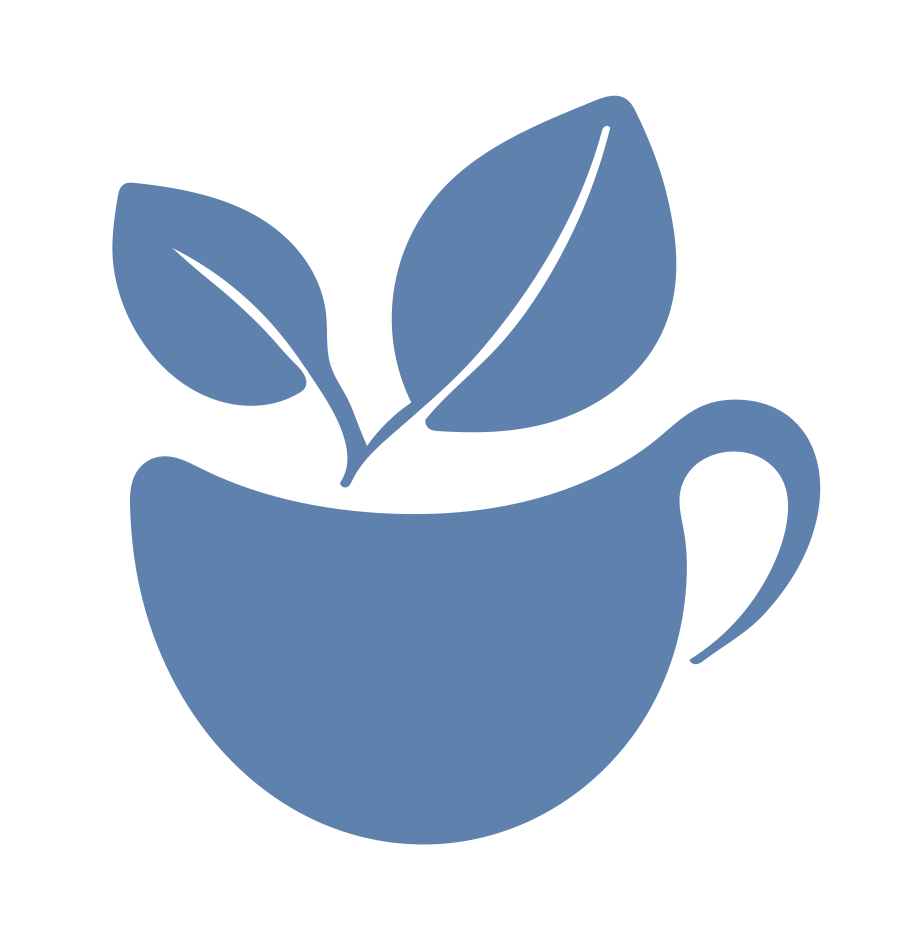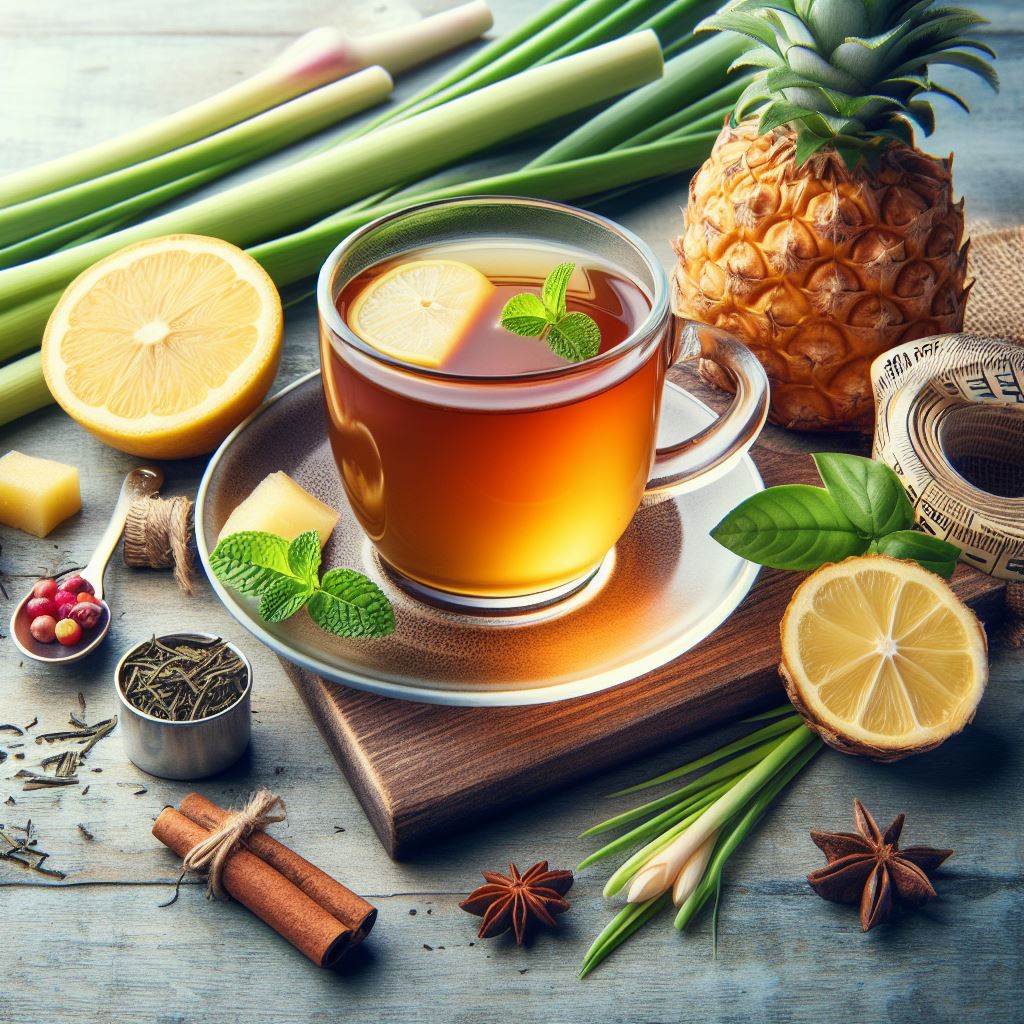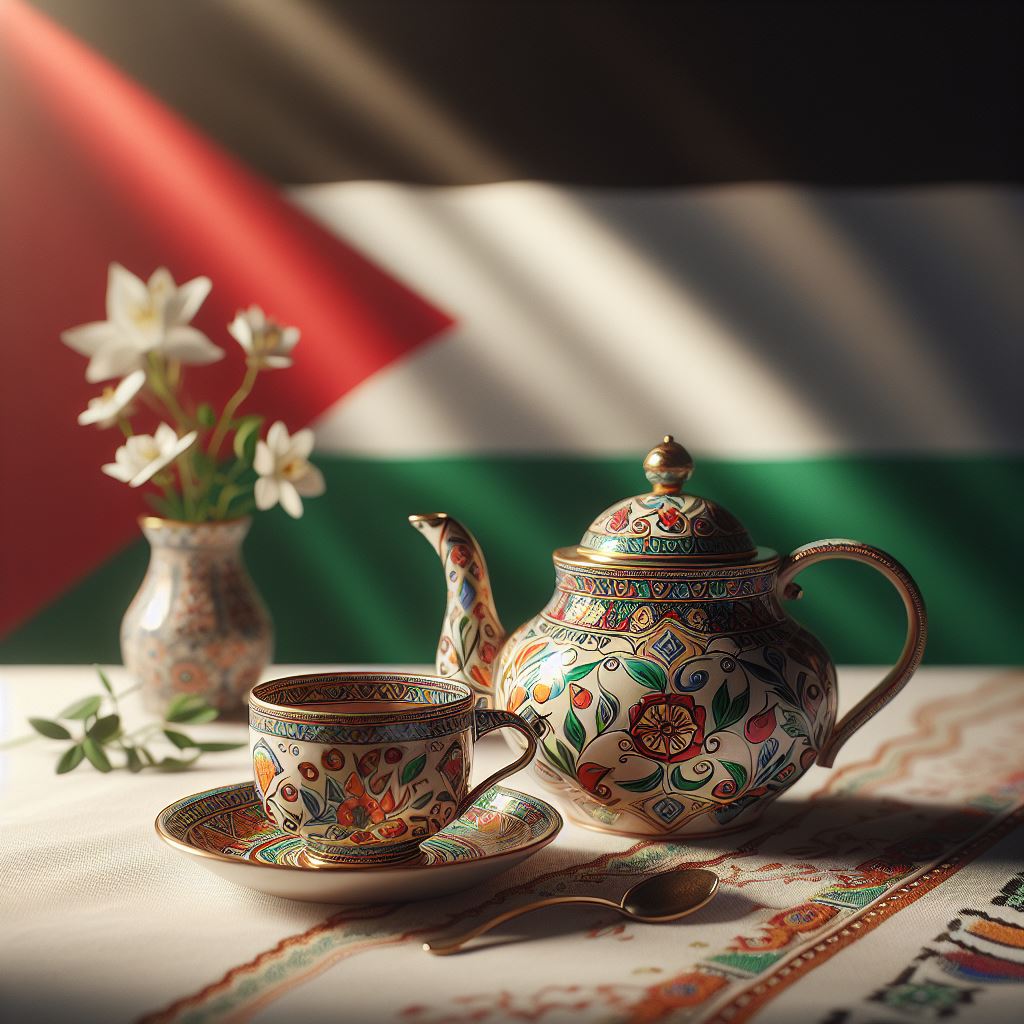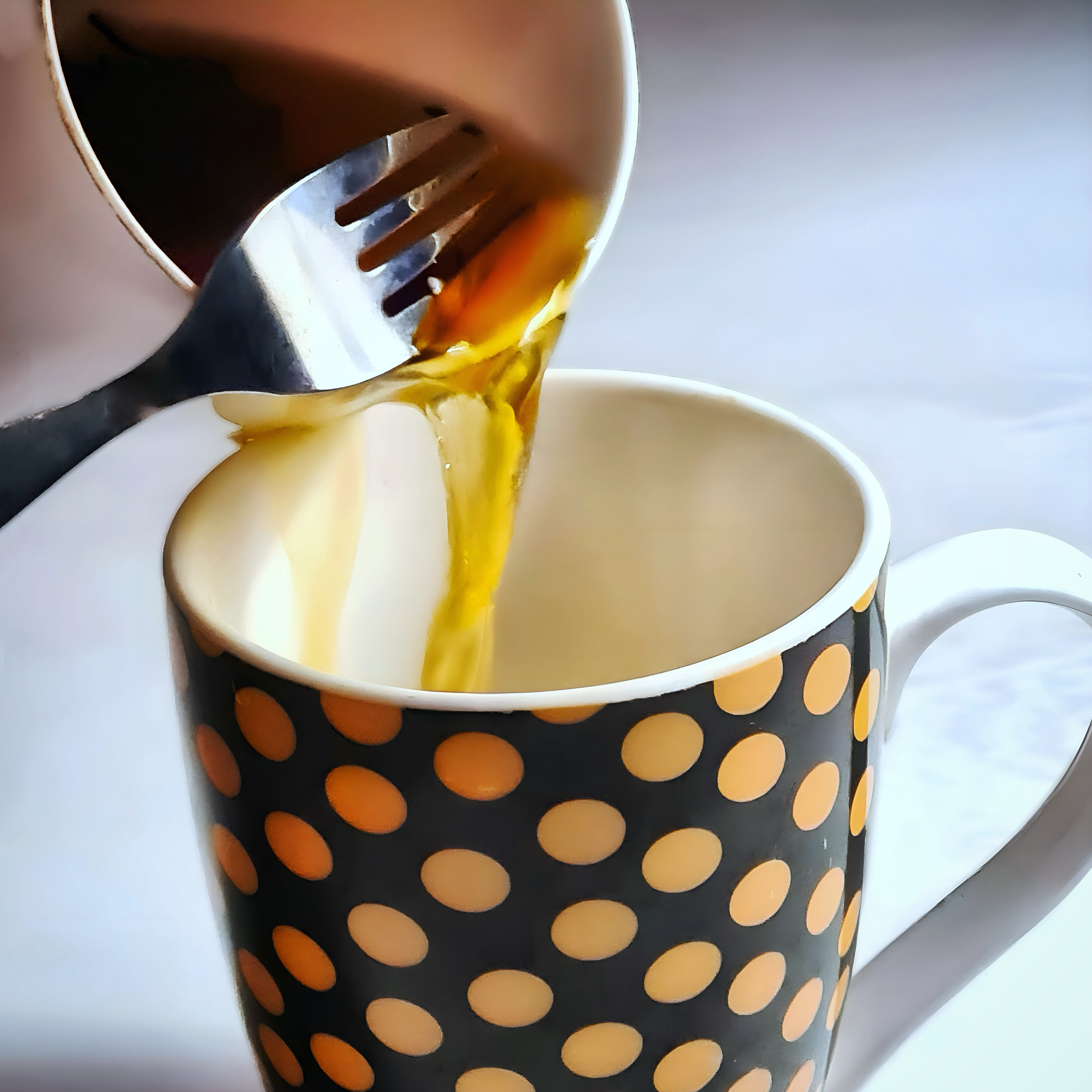Welcome back to our “Tea 101” series where we explain the essentials of tea-making! In this comprehensive guide, we will be looking at herbal tea and everything you need to know about it! Herbal teas are not only delicious and refreshing, but also offer a variety of health benefits. Whether you want to boost your immune system, improve your digestion, relax your mind, or simply enjoy a cup of tea, herbal teas can help you achieve your goals. In this guide, we will explore the benefits of herbal tea and share some easy and creative recipes that you can try at home.

What are Herbal Teas?
Herbal teas are beverages made from the infusion of herbs, flowers, fruits, and other botanical ingredients in hot water. Unlike true teas, such as green, black, oolong, and white teas, which are made from the leaves of the Camellia sinensis plant, herbal teas do not contain any caffeine. This makes them ideal for people who want to avoid or limit caffeine intake.
Herbal teas have been used for centuries as natural remedies for various ailments and as sources of enjoyment and relaxation. There are hundreds of different types of herbal teas, each with its own unique flavor and health properties. Some of the most popular herbal teas include chamomile, peppermint, ginger, lavender, hibiscus, rosehip, lemon balm, and rooibos. Keep reading this guide to discover how each herbal tea can help improve your wellbeing!
Understanding Herbal Tea
To better appreciate the benefits and recipes of herbal teas, it is helpful to understand some basic concepts and terms. Here is a brief guide to understanding herbal tea further:
1. What is an Infusion?
An infusion is a method of extracting the flavor and essence of plant materials by steeping them in hot water. The term infusion is often used interchangeably with herbal tea, but technically speaking, an infusion is any liquid that has been infused with plant materials, not just water. For example, you can make an infusion with oil, vinegar, alcohol, or milk.
2. What is a Tisane?
A tisane is another term for herbal tea that is derived from the French word “tisane”, which means “barley water”. The term tisane is often used to distinguish herbal teas from true teas (green, black, oolong, etc.), which are made from the Camellia sinensis plant. However, some people may use the term tisane to refer to any infusion that does not contain caffeine.
3. What is a Decoction?
A decoction is a method of extracting the flavor and essence of plant materials by boiling them in water. The term decoction is often used to refer to herbal teas that are made from hard or woody parts of plants, such as roots, bark, seeds, or stems. These parts require more heat and time to release their active compounds than softer parts like leaves or flowers.
Benefits of Herbal Teas

Herbal teas are rich in antioxidants, vitamins, minerals, and other phytochemicals that can help protect the body from oxidative stress and inflammation. Depending on the specific ingredients, herbal teas may also help with:
- Improving digestion and relieving stomach problems. Peppermint tea is one of the best herbal teas for soothing the digestive system and easing symptoms of irritable bowel syndrome (IBS), nausea, bloating, and gas. Ginger tea is another great choice for relieving nausea and vomiting, especially during pregnancy.
- Boosting the immune system and fighting infections. Elderberry tea is a traditional remedy for colds and flu, as it may help reduce the severity and duration of symptoms. Echinacea tea is also believed to enhance the immune system and prevent or treat upper respiratory tract infections.
- Promoting relaxation and sleep quality. Chamomile tea is one of the most popular herbal teas for inducing calmness and reducing stress. It may also help improve sleep quality in older adults and postpartum women. Lavender tea is another soothing herbal tea that may help reduce anxiety and insomnia.
- Supporting heart health and blood sugar control. Hibiscus tea is a refreshing herbal tea that may help lower blood pressure and cholesterol levels. It may also have anti-diabetic effects by improving insulin sensitivity and glucose metabolism. Green tea is another herbal tea that may benefit heart health and blood sugar control by its antioxidant and anti-inflammatory properties.
These are just some examples of the benefits of herbal teas. However, it is important to note that herbal teas are not a substitute for medical treatment and should be consumed with caution if you have any health conditions or allergies. Always consult your doctor as a guide before using any herbal tea as part of your health regimen.
Exploring Herbal Tea Ingredients
One of the best things about herbal tea is that you can create your own blends using various herbs, flowers, fruits, and spices. By mixing different ingredients, you can create unique and harmonious flavor combinations that suit your taste buds and mood. Here is a guide to some common ingredients used in herbal tea and their characteristics:
- Chamomile: A delicate flower with a sweet and floral flavor. It has calming and anti-inflammatory effects.
- Lavender: A fragrant flower with a soothing and relaxing aroma. It has antidepressant and antiseptic effects.
- Hibiscus: A bright red flower with a tart and fruity flavor. It has antioxidant and antihypertensive effects.
- Ginger: A spicy root with a warming and zesty flavor. It has anti-nausea and anti-inflammatory effects.
- Peppermint: A refreshing herb with a cool and minty flavor. It has antispasmodic and digestive effects.
- Lemon balm: A citrusy herb with a lemony flavor. It has sedative and antiviral effects.
- Rosehip: A tangy fruit with a sour and sweet flavor. It has vitamin C and anti-inflammatory effects.
- Rooibos: A red bush with a nutty and earthy flavor. It has antioxidant and anti-allergic effects.
Blending and Pairing Herbal Teas

Blending herbal teas is an art that requires balancing flavors, aromas, colors, textures, and health benefits. There are no strict rules for blending herbal teas, but here are some tips to help you create your own blends:
- Start with a base ingredient that has a dominant flavor or color. For example, hibiscus, rooibos, or green tea.
- Add complementary ingredients that enhance or contrast the base flavor or color. For example, lemon, ginger, or mint.
- Adjust the proportions of each ingredient according to your preference. For example, more hibiscus for a stronger tartness, less ginger for a milder spiciness, or more mint for a cooler freshness.
- Experiment with different combinations and see what works for you. For example, try hibiscus and ginger, rooibos and lemon, or green tea and mint.
Pairing herbal teas with food or desserts can also enhance the overall tea experience. Here are some suggestions for pairing herbal teas with different types of food:
- Chamomile tea pairs well with light and delicate foods, such as salads, sandwiches, or cookies.
- Lavender tea pairs well with rich and creamy foods, such as cheese, chocolate, or cake.
- Hibiscus tea pairs well with spicy and savory foods, such as curry, tacos, or pizza.
- Ginger tea pairs well with sweet and sour foods, such as fruit, yogurt, or pie.
- Peppermint tea pairs well with refreshing and cooling foods, such as ice cream, sorbet, or pudding.
- Lemon balm tea pairs well with citrusy foods, such as lemonade, cheesecake, or marmalade.
- Rosehip tea pairs well with nutty and earthy foods, such as granola, oatmeal, or bread.
- Rooibos tea pairs well with hearty and robust foods, such as stew, roast, or brownies.
Brewing and Serving Herbal Teas
Brewing herbal tea is easy and simple. All you need is hot water, a teapot or infuser, and your favorite herbal tea blend. Here is a general guide for brewing herbal tea:
- Use fresh and filtered water for the best taste and quality.
- Bring the water to a boil and then let it cool slightly to around 200°F (93°C). This is the optimal temperature for most herbal teas. If you are using green tea as a base ingredient, use slightly cooler water at around 175°F (80°C) to avoid bitterness.
- Use about one teaspoon of herbal tea per cup of water. You can adjust the amount depending on how strong you like your tea.
- Steep the herbal tea for about 5 to 10 minutes. You can steep longer for a stronger flavor or shorter for a lighter flavor. Some herbal teas may become bitter if steeped too long, so check the instructions on the package or experiment with different steeping times.
- Strain the herbal tea and enjoy it hot or cold. You can add honey, sugar, lemon, milk, or cream to your tea if you like.
Hot Herbal Tea Recipes
Here are some creative and refreshing herbal tea recipes that you can try at home:
Lemon Ginger Tea

This is a classic herbal tea that is perfect for soothing a sore throat or warming up on a cold day.
Ingredients:
- 4 cups of water
- 1/4 cup of fresh ginger slices
- 1/4 cup of fresh lemon juice
- 2 tablespoons of honey
Directions:
- In a small saucepan, bring the water and ginger to a boil over high heat.
- Reduce the heat and simmer for about 15 minutes.
- Strain the ginger and discard it.
- Stir in the lemon juice and honey.
- Serve hot in mugs.
Lavender Chamomile Tea

This is a relaxing herbal tea that is ideal for unwinding before bedtime or easing stress.
Ingredients:
- 4 cups of water
- 2 tablespoons of dried lavender flowers
- 2 tablespoons of dried chamomile flowers
- 2 teaspoons of honey
Directions:
- In a small saucepan, bring the water to a boil over high heat.
- Remove from the heat and add the lavender and chamomile flowers.
- Cover and steep for about 10 minutes.
- Strain the flowers and discard them.
- Stir in the honey.
- Serve hot in mugs.
Iced Herbal Tea Recipes
Hibiscus Mint Tea

This is a refreshing herbal tea that is great for cooling down on a hot day or quenching thirst.
Ingredients:
- 4 cups of water
- 1/4 cup of dried hibiscus flowers
- 1/4 cup of fresh mint leaves
- 1/4 cup of sugar
Directions:
- In a small saucepan, bring the water to a boil over high heat.
- Remove from the heat and add the hibiscus flowers and mint leaves.
- Cover and steep for about 20 minutes.
- Strain the flowers and leaves and discard them.
- Stir in the sugar until dissolved.
- Transfer the tea to a pitcher and refrigerate until chilled.
- Serve over ice in glasses.
Rooibos Lemonade Tea

This is a delicious herbal tea that combines the nutty flavor of rooibos with the tangy flavor of lemonade. It is a perfect drink for summer or anytime you need a refreshing boost.
Ingredients:
- 4 cups of water
- 1/4 cup of loose rooibos tea or 4 rooibos tea bags
- 1/4 cup of fresh lemon juice
- 1/4 cup of sugar
Directions:
- In a small saucepan, bring the water to a boil over high heat.
- Remove from the heat and add the rooibos tea.
- Cover and steep for about 10 minutes.
- Strain the tea and discard the leaves or bags.
- Stir in the lemon juice and sugar until dissolved.
- Transfer the tea to a pitcher and refrigerate until chilled.
- Serve over ice in glasses.
Conclusion
Herbal teas are wonderful beverages that offer a range of flavors, aromas, colors, and health benefits. They are easy to make, blend, and serve, and can be enjoyed hot or cold. By following this guide with the various herbal tea recipes, you can enjoy the best of both worlds: delicious taste and wellness. We hope you enjoyed this guide on herbal tea benefits and recipes. Stay tuned for more articles on different types of teas and important knowledge. In the meantime, feel free to share your favorite herbal tea blends and experiences with us in the comments section below. Happy tea drinking! 😊
Discover More Tea-Related Articles:
- Milk Thistle Tea: The Ultimate Brew for Wellness and Vitality
- Soursop Tea: A Tropical Treat with Amazing Health Benefits
- How to Use Oranges with Tea for a Zesty and Healthy Drink
- How to Make Iced Tea: The Ultimate Guide
- Tea for Sickness: How to Brew the Perfect Cup for Your Symptoms
Sources:
- Mayo Clinic. (2019, October 17). Caffeine content for coffee, tea, soda and more.
- National Center for Complementary and Integrative Health. (2019, November). Chamomile.
- McKay, D. L., & Blumberg, J. B. (2006). A review of the bioactivity and potential health benefits of peppermint tea (Mentha piperita L.). Phytotherapy research, 20(8), 619-633.
- Ernst, E., & Pittler, M. H. (2000). Efficacy of ginger for nausea and vomiting: a systematic review of randomized clinical trials. British journal of anaesthesia, 84(3), 367-371.
- Posadzki, P., Watson, L., & Ernst, E. (2013). Adverse effects of herbal medicines: an overview of systematic reviews. Clinical medicine, 13(1), 7-12.
- Karsch-Völk, M., Barrett, B., Kiefer, D., Bauer, R., Ardjomand-Woelkart, K., & Linde, K. (2014). Echinacea for preventing and treating the common cold. Cochrane Database of Systematic Reviews, (2).
- Srivastava, J. K., Shankar, E., & Gupta, S. (2010). Chamomile: a herbal medicine of the past with a bright future. Molecular medicine reports, 3(6), 895-901.
- Chang, S. M., & Chen, C. H. (2016). Effects of an intervention with drinking chamomile tea on sleep quality and depression in sleep disturbed postnatal women: a randomized controlled trial. Journal of advanced nursing, 72(2), 306-315.





Leave a Comment